When NBA players hit the hardwood floor this fall, the jersey straps on their shoulders will look entirely different.
The league is making a pair of marketing moves when the season tips off in October, one being a new global apparel partnership with Nike that features the iconic swoosh logo occupying the longtime real estate once reserved for the Jerry West-inspired silhouette. The other is that each of the 30 teams will send players to the court on a nightly basis emblazoned with a brand-sponsored patch.
The NBA’s board of governors approved jersey sponsorships last year as part of a three-year pilot program that marries teams with brands both on-and-off the court, and more than a third of the league’s franchises have already secured sponsors. Each team is responsible for negotiating and selling their own jersey sponsorships, and 11 have already formed unions:
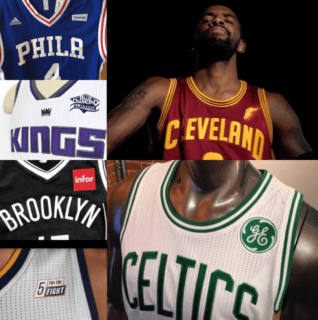
Boston Celtics (GE), Brooklyn Nets (Infor), Cleveland Cavaliers (Goodyear), Detroit Pistons (Flagstar Bank), Denver Nuggets (Western Union), Minnesota Timberwolves (Fitbit), Orlando Magic (Disney), Philadelphia 76ers (StubHub), Sacramento Kings (Blue Diamond), Toronto Raptors (Sun Life) and Utah Jazz (Qualtrics).
The patches are netting in the neighborhood of $3-to-$8 million per year, with pricing varying from glamour franchises with marketable stars to cellar-dwelling teams getting little play on national television.
The new branded format positions the NBA to provide deeper engagement with partners looking to build unique associations with its teams. In turn, the investments pad the pockets of both owners and a multi-billion-dollar league that’s looking toward innovation to allow for them to remain competitive in a global marketplace.
Basketball fans will not be forced to buy retail versions adorning sponsor patches, but teams have the option to sell the branded-jerseys in their own retail outlets.
AListDaily united the one-two punch of Tim Rosa, senior vice president and chief marketing officer at Fitbit, and formerly the vice president of global brand development at Electronic Arts, and Ethan Casson, CEO for the Minnesota Timberwolves and the WNBA’s Minnesota Lynx, and the COO and CRO of the San Francisco 49ers before that, to dish details on how this deal will shift the sports marketing landscape and what we can expect from their partnership moving forward.
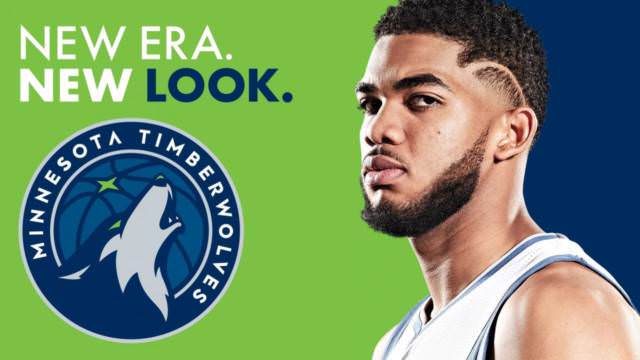
Why were the Timberwolves and the market of Minnesota the best fit for Fitbit to partner with as the “official wearable,” “official sleep tracker” and jersey patch?
Rosa: When determining the NBA landscape in terms of sponsorship, the Timberwolves were a natural fit—this partnership provides a chance to work with a young, up-and-coming NBA team, dominant WNBA team and premier NBA developmental team. Both organizations are uniquely aware of the role data and analytics can play in improving performance and the partnership offers a chance to work across the whole Timberwolves organization, expanding our work in the corporate wellness space. Minnesota also makes sense for us—it’s home to many like-minded partners of Fitbit, including UnitedHealthcare. Duluth topped our “fittest cities” list this year, with Minneapolis taking second place last year.
Why was it important for the Timberwolves to partner with a wearables brand?
Casson: When we set out to find a partner for the jersey patch, we looked locally, nationally and even internationally to find who would be right for this opportunity. In Fitbit, we found an ideal partner at a time when our franchise is taking a fresh look at technology and innovation, and how it can be leveraged within our business to improve operations, fan experience and fan engagement. There are many synergies between our two companies—both of us are very focused on the role data and analytics play in our businesses, and on being innovators in our respective industries.
(Former Timberwolves star Zach LaVine’s first-hand experience using Fitbit Blaze, shortly before he was traded this offseason.)
Is the NBA introducing ad-sponsored jerseys a good thing for the league? What are you looking forward to learning most about the process?
Casson: The NBA continues to be at the forefront of these types of initiatives and we’re thrilled to partner with Fitbit on this new and powerful piece of inventory. With the popularity of the NBA game at an all-time high, I think the media exposure attached to the patch will be remarkable. . . . The patch provides another piece of inventory to start the conversation, and in the case of Fitbit, is one part of a much larger relationship. We’re looking at this as a bigger story around health and wellness, technology and innovation.
Fitbit positioned its brand on providing data and analytics. On the business side, how are you using data and analytics as part of your overall marketing strategy to reach fans?
Casson: Our emphasis on data and analytics has expanded tremendously over the past several years. Where our business intelligence unit started as a department of one, it has now grown to a department of eight people who are continually looking at ways to customize the experience for our fans. . . . We’ll be making a series of technology announcements, including new partners and upgrades, over the next several months. We recently announced a new app that will launch prior to next season through VenueNext, and we will continue to unveil significant technology upgrades tied to the re-opening of the renovated Target Center prior to the upcoming season . . . Our new app will give our team even more capabilities for gathering insights to help us understand our fans’ preferences, make customized recommendations and make informed business decisions about our fans’ behavior.
Why is it important for a sports franchise to tell a bigger story around innovation and health and wellness?
Rosa: When we were looking at this opportunity, we saw the ability to extend our relationship beyond just a business sponsorship, and form a real partnership with the Timberwolves where we are working together and collaborating. Data from Fitbit wearables can help the Timberwolves on and off the court. While the NBA does not allow wearables to be worn during games, there is a lot of innovation happening around sensor technology and its placement. The goal is to create the awareness and really start to dig in with a team that is embracing innovation and technology, and use it in a lot of different ways. For example, seeing how sleep plays a role in performance and fitness, or how travel schedules and back-to-back games affect a player’s performance and recovery.
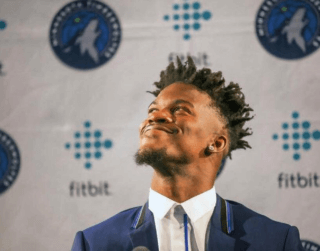
How are you going to leverage this pact to identify new ways that Fitbit can provide value to other brands?
Rosa: We believe that wearable technology is in a position to change the sports and fitness landscape—whether with everyday athletes or professionals. We’re committed to working together to identify new and innovative ways that our technology can help enhance and improve performance throughout the organization as it embarks on a promising future. We’re exploring opportunities for the Iowa Wolves to serve as a testbed for using Fitbit technology in new ways to enhance basketball performance.
How does a partnership like this fit into Fitbit’s overall marketing strategy?
Rosa: This isn’t our first work with the NBA—we have previously worked with the Warriors and Cavaliers in the area of corporate wellness, and announced an integration with NBA 2K17 to provide video game players with in-game rewards based on their real-world activity. We continue to embrace new partnerships with brands that share our vision for engaging the community and helping consumers lead active, healthy lives.
What are you most looking forward to getting out of this union?
Rosa: We’re excited about the opportunity this partnership provides to generate excitement and awareness around the value wearable technology can bring to the NBA. This will also raise the profile of wearables with everyday consumers and professional athlete.
Considering your new roster and excitement behind it, highlighted by the addition of Jimmy Butler, how will the Timberwolves be leveraging this as part of a larger rebranding strategy?
Casson: We have entered a new era of Timberwolves basketball—beyond the exciting roster, we also have new leadership on and off the court, a newly renovated Target Center hitting the finish line in time for next season, and are currently undergoing a rebrand. We unveiled our new logo in April, and soon we will be unveiling our new uniforms with Fitbit patches included on these brand new designs. The partnership with Fitbit is also absolutely a part of this new era. The announcement is just the first step and there are many directions we can go both on and off the court. We look forward to working alongside Fitbit to make this an exciting partnership over the next three years.
Welcome to the New Era. #NewEraNewLook pic.twitter.com/STDKfWVMrJ
— Timberwolves (@Timberwolves) April 12, 2017
The new threads have dropped. Bring on the New Era. #NewEraNewThreads pic.twitter.com/t0PjCcp8II
— Timberwolves (@Timberwolves) August 10, 2017

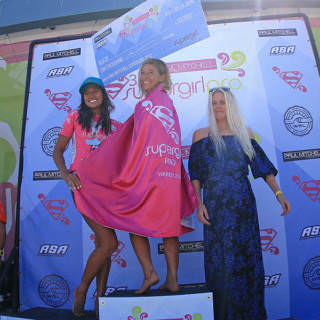 What are some of the main sponsors for the Supergirl Gamer Pro tournament and how will they be represented?
What are some of the main sponsors for the Supergirl Gamer Pro tournament and how will they be represented? NBA star and celebrity spokesperson Karl-Anthony Towns made appearances at Activision’s E3 booth to further spur excitement on the show floor, but the real spectacle would happen high up in the sky. On the opening day of E3, two groups of World War II-era planes flew over the Los Angeles Convention Center to promote the upcoming game. The two flybys made multiple passes over the South Hall of the convention center, flying approximately 800-1,000 feet off the ground. The first group included a C-53 transport plane while the second squadron included AT-6 planes based in Van Nuys, California.
NBA star and celebrity spokesperson Karl-Anthony Towns made appearances at Activision’s E3 booth to further spur excitement on the show floor, but the real spectacle would happen high up in the sky. On the opening day of E3, two groups of World War II-era planes flew over the Los Angeles Convention Center to promote the upcoming game. The two flybys made multiple passes over the South Hall of the convention center, flying approximately 800-1,000 feet off the ground. The first group included a C-53 transport plane while the second squadron included AT-6 planes based in Van Nuys, California.
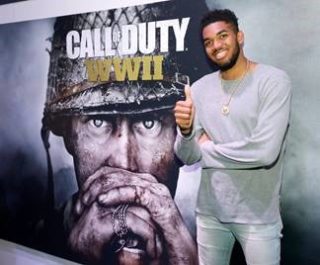 Harvey also detailed how Karl-Anthony Towns became involved with Call of Duty’s promotion. “We first met Karl-Anthony during Call of Duty’s release in 2015, and more recently sponsored him last year during our fan celebration event, Call of Duty XP,” he said. “His knowledge of Call of Duty’s history and interest in the various aspects of gameplay is impressive. This year, with our return to the Call of Duty franchise’s roots in World War II, we felt E3 would be a great opportunity to sponsor his appearance and host him here at the show. He was able to spend time with and play Call of Duty: WWII and met some of the team. He was great to work with, and an absolute pleasure.”
Harvey also detailed how Karl-Anthony Towns became involved with Call of Duty’s promotion. “We first met Karl-Anthony during Call of Duty’s release in 2015, and more recently sponsored him last year during our fan celebration event, Call of Duty XP,” he said. “His knowledge of Call of Duty’s history and interest in the various aspects of gameplay is impressive. This year, with our return to the Call of Duty franchise’s roots in World War II, we felt E3 would be a great opportunity to sponsor his appearance and host him here at the show. He was able to spend time with and play Call of Duty: WWII and met some of the team. He was great to work with, and an absolute pleasure.”